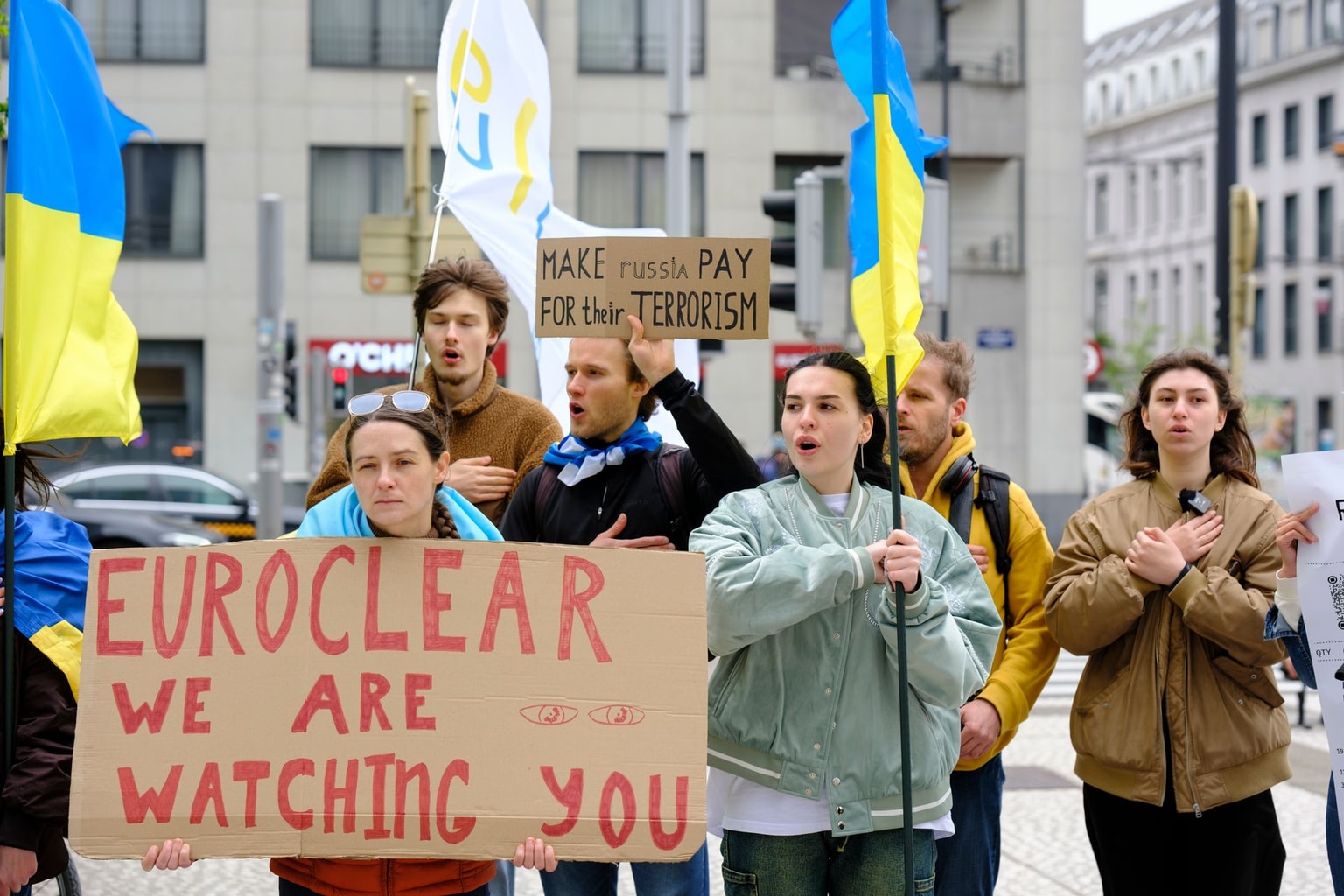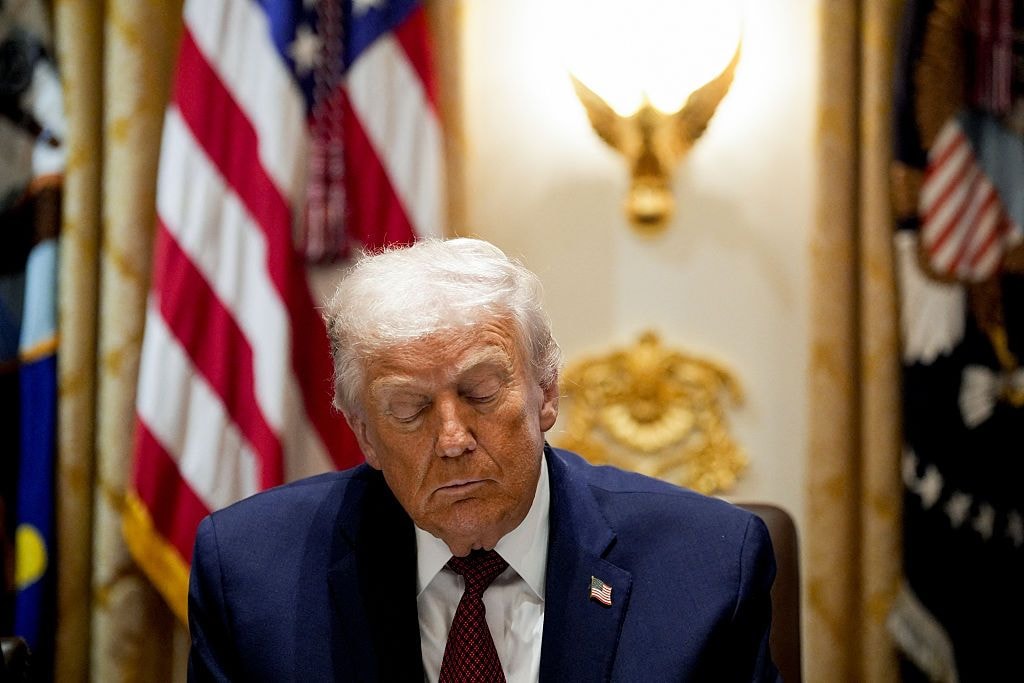As Russia seeks to destroy Ukrainian culture, diaspora continues to preserve it abroad

As Igor Martiniouk, 20, looked around the Soyuzivka Ukrainian Heritage Center in Upstate New York, the Catskill Mountains and lush green forests reminded him of the Ukrainian Carpathian Mountains.
This was just as the center’s founders had intended. From the choice of location in mountainous Kerhonkson, New York, to the elaborate woodcarvings on cabins, the 1952 project was meant to recreate western Ukraine for refugees.
The center, sometimes referred to as Suzi-Q, or the Q, is a Ukrainian cultural center created by members of the Ukrainian diaspora in the U.S. that aims to provide a place for all things Ukraine: from language workshops and heritage studies to summer camps and art exhibits.

A view from Soyuzivka Ukrainian Heritage Center, founded in 1952 in Kerhonkson, New York, to preserve Ukrainian culture, heritage, and traditions. (Igor Martiniouk)
But Soyuzivka is just a small part of the diaspora’s attempt to preserve and cultivate Ukrainian culture abroad.
Since Russia scaled up its assault against Ukraine on Feb. 24, it has committed over 492 crimes against Ukraine’s cultural heritage, according to the Ministry of Culture. As many as 140 cultural sights and 166 religious sights have been damaged or completely destroyed by Russia’s shelling and missile strikes over the six months of the all-out war.
Moscow has also been consistent with its aim to erase Ukrainian culture in the territories it occupied. Schools there are being forced to shift to the Russian curriculums, while the Russian language is enforced on institutions and businesses.
As Ukraine’s culture continues to be under the Russian threat, many Ukrainian Americans have again come to rely on Ukrainian cultural groups and practices to demonstrate resilience. They also use these opportunities to collect much-needed money for aid to Ukraine.
Culture as resistance
For Sophia Charron, 21, decorating Easter eggs, or doing pysankarstvo as it is called in Ukrainian, is a “craft of resistance.” As a daughter of a Ukrainian Greek Catholic priest, she moved around Canada and the U.S. as a child but would come back to the traditional Ukrainian art of egg decoration whenever she had “three dyes, some wax, and eggs.”
During the first days of Russia’s full-scale invasion, the Russian assault on the Kyiv region reminded her of the older diaspora’s attitude. “They thought they might be the last Ukrainians, so they had to preserve the culture and its practices,” Charron said.
Now, she teaches her community in Pennsylvania to decorate Easter eggs, or pysanky, “to preserve the culture because it’s being destroyed in Ukraine.” By grounding the practice in the symbols of struggle, love, and loss — “ubiquitous to human experience” — Charron says she wants to make Ukrainian culture more accessible.

Dancers perform Ukrainian national dance at the Saint George Annual 7th Street Ukrainian Festival in May 2022 in New York City. (Photo: Igor Martiniouk)
Martiniouk spent his childhood dancing traditional Ukrainian hopak and Hutsul (ethnic group in the west of Ukraine) dances at New York City’s East Village Saint George 7th Street Ukrainian Festival. Now, he prefers to capture Ukrainian culture on camera, organizing photo exhibits at his university.
For Martiniouk, returning to tradition has been a way to resist Russia’s renewed assault on Ukrainian culture. “The way we can make sure that our Ukrainian culture is not taken away is by carrying on the traditions, speaking Ukrainian, going to Ukrainian churches, and celebrating traditions like Christmas or Easter,” Martiniouk said.
Solomiya Koziy’s connection to Ukraine only grew more tangible after Feb. 24. When the 19-year-old is not teaching young Ukrainian Americans at a Saturday school in New York City, she is singing with the Dumka Ukrainian chorus.
On Feb. 27, three days after Russia’s all-out war began, the chorus sang “Prayer for Ukraine” on Saturday Night Live that evening.
That performance, with more than 3 million views on YouTube, kickstarted the chorus’ fundraising campaign for Ukraine. The fundraising efforts aimed to help children with trauma and Ukrainian refugees in Poland. Solomiya said she hopes the chorus will perform on SNL again, but after the war is over and Ukraine has won.

Creating a Ukrainian utopia
Ukrainian folk traditions have flourished outside of Ukraine, and in some cases are more commonly practiced among diaspora communities than in Ukraine. Charron’s mother only took up the traditional art of painting Easter eggs and baking Ukrainian Easter bread once she had already left Ukraine.
Julian Hayda, a third-generation Ukrainian American living in Kyiv, says the exceptionality and artificiality of the Ukrainian diaspora became apparent to him when he traveled to Ukraine at the age of 18 around 12 years ago.
“(The diaspora) was created first by immigrants from the Austro-Hungarian Empire in the 1890s and then re-created on that foundation by the World War II era immigrants, who had an ideological conception related to the trauma of World War II, the rise of the Soviet Union, and systemic Ukrainophobia,” Hayda said. “They built an almost utopian society, as they imagined it, in 1950s America.”

The bust of the Ukrainian poet Taras Shevchenko in Soyuzivka Ukrainian Heritage Center, located in Kerhonkson, New York. (Photo: Igor Martiniouk)
Luke Lashchuk, a third-generation Ukrainian American from San Diego says he sees the diaspora culture as an ideal built on escaping prosecution.
“They were running from the same people, the Russians,” Lashchuk said. “People wanted to create this ideal. This is how they remembered the beautiful elements of Ukraine which they had to flee.”
This Ukrainian “ideal” of sorts, according to diaspora members, took on a life of its own. The freedom to practice Ukrainian religion, traditions, and a language outlawed in the Soviet Union allowed Ukrainian culture to flourish on another path, shaped by fragments of what were perceived to be the most valuable elements of Ukrainian culture and diverging from Ukrainian cultural developments a continent away.
Keeping traditions alive
As Ukrainians flee their homeland, Russia’s destruction and assimilation abroad are threatening the continuity of culture, from speaking Ukrainian to maintaining traditions.
Hayda believes resisting assimilation is a privilege. Ukrainian school tuition and traditional camps require time and financial investments.
“When you learn English and when you start to speak it exclusively, you do lose a little bit of something,” Hayda said. “Inevitably, just to put food on the table, just to move through the world, they will inevitably learn other languages.”
Sociological research on assimilation in the U.S. lends evidence to his point: European immigrants tend to mostly lose their mother tongue by the third generation. Many from the new generation of Ukrainian Americans are looking for ways to pass on these traditions to younger children.

A tree carving in Soyuzivka Ukrainian Heritage Center, located in Kerhonkson, New York. (Photo: Igor Martiniouk)
When Koziy moved to Brooklyn as a kid in 2015, she found refuge and life-long friends in the Ukrainian community. Witnessing others lose their connection with Ukraine led her to become a teaching assistant at a Ukrainian school.
“I was really happy that I was able to interest more kids and advertise the Ukrainian school to others,” Koziy said. “I want people to be connected to where they came from.”
She is not alone. Vladyslav Nikolyuk, who came to the U.S. in 2012 as a 10-year-old, started a branch of Plast, a Ukrainian Scouting organization, in Brooklyn, reaching kids who couldn’t afford to go to the bigger camps in the summer.
As a “bratchyk” (counselor) in the camps, he says he finds value in teaching kids love and respect for Ukraine and leadership, drawing inspiration from Plast members in Ukraine who joined the military to resist the Russian invasion.
“I would love nothing more than to be with the people that I know that are out there but if they are telling me to stay here and try to do something from here, that’s the way to do it,” Nikolyuk said.










